I got up at 4 a.m. to see how one of Singapore's famous hawkers prepares for a day of cooking meals that cost just $2.50 in the second-most expensive city in the world
Marielle Descalsota

- Singapore's hawker culture is regarded as a national treasure.
- I spent a day at Mizzy Corner, a nasi lemak stall, to learn how they prepare one of the city-state's most iconic dishes.
Changi Village is one of eastern Singapore's most famous food spots.
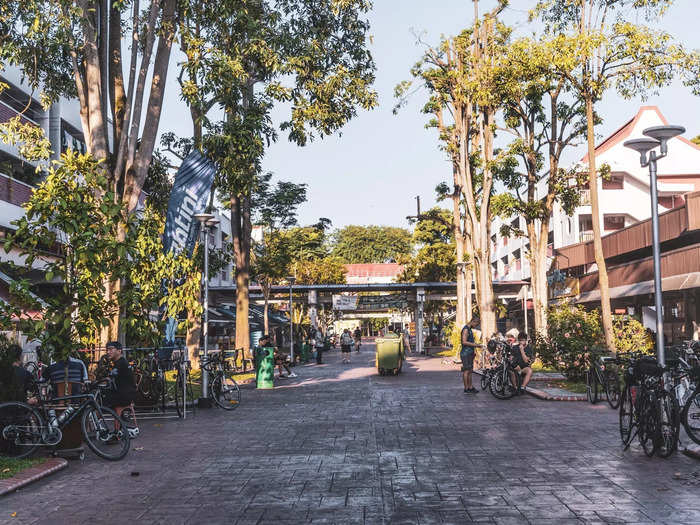
I grew up in a neighborhood in eastern Singapore, and the seaside enclave of Changi Village has been a part of my life for as long as I can remember.
My favorite part of this experience is the food. From Thai to Chinese to Indian fares, the area is home to a wide range of cafes, bars, hawker centers, and restaurants.
Changi Village's current infrastructure — comprising four-story residential buildings and eateries — was built in the late 1970s to early 1980s. The area was initially developed as a military base for the British Army, according to government microsite Singapore Infopedia.
The village's hawker center has been serving delicious and affordable meals since 1975.
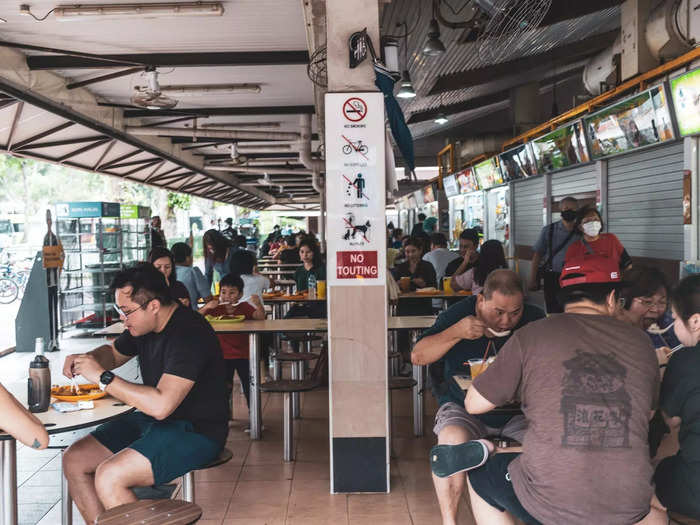
For almost two decades, my go-to place for a cheap and filling meal has been the Changi Village Hawker Center.
Eating out can be quite pricey in the world's second-most expensive city, so many residents frequent hawker centers almost daily.
The Changi Village Hawker Center is one of over 110 of its kind in the city-state, according to the government microsite Our SG Heritage.
Hawker centers feature open-air food stalls that serve up inexpensive meals, usually within five minutes. These stalls are so important in local culture that they were named in the 2020 UNESCO Representative List of the Intangible Cultural Heritage of Humanity. Notably, despite Singapore's year-round heat, hawker kitchen stall are never air-conditioned.
Mizzy Corner, a pair of stalls in the hawker center, has remained one of the most popular businesses since it opened in 1997.
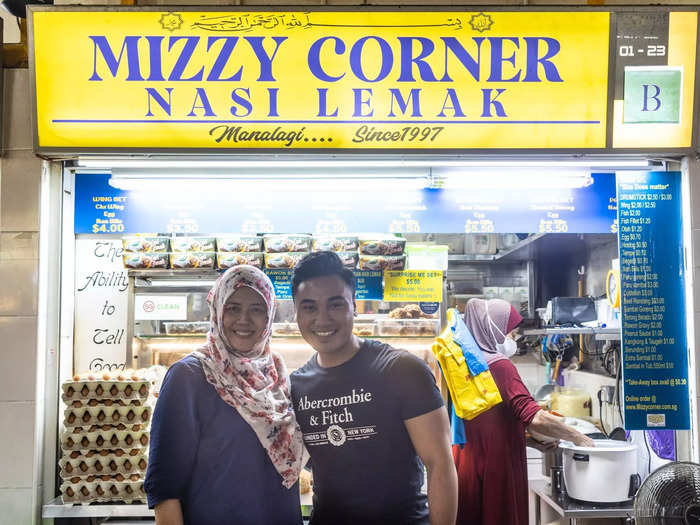
Owned by Mizrea Abu Nazir, the longstanding pair of hawker stalls has been in business for 25 years.
Mizrea's grandparents, who owned a stall in the same hawker center, were her inspiration for continuing the family legacy.
The stalls, which run 24 hours a day, have been named on several top foods lists in Singapore.
"I wanted to learn the trade," Mizrea told me. "It was only after I had my first child that I decided to join the business full-time," she added.
I was always curious how hawkers prepare for a long day of serving dozens (at times, even hundreds) of plates of food every day.
With Mizrea's blessing, I visited Mizzy Corner at 4 a.m. on a recent weekend to learn more about what it takes to run a hawker stall.
The stall serves nasi lemak, a staple dish in Malay cuisine.
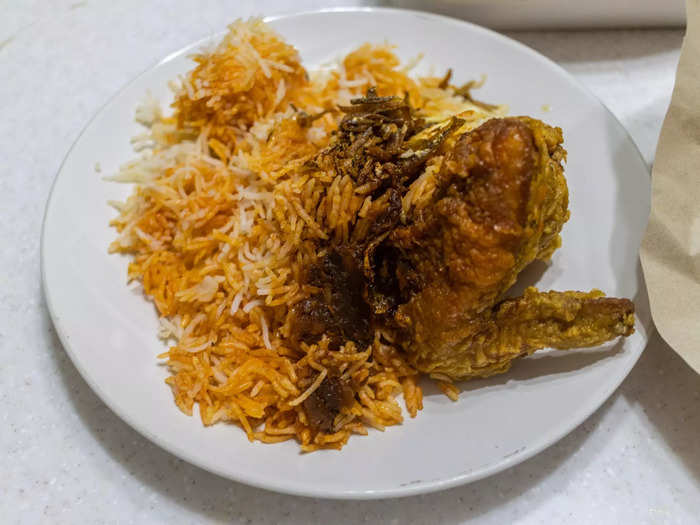
Nasi lemak (pictured above) is one of Southeast Asia's most famous dishes. It's a staple in countries like Singapore and Malaysia.
The dish comprises coconut rice, meat, anchovies, egg, and sambal — a relish made of various spices and fresh chilies. It usually tastes savory and just a tad spicy.
Prices of the dish at Mizzy Corner start from S$3.50 ($2.50). While Mizrea declined to reveal how many plates of the dish she sells per day, she said business has been good and has grown over the years.
When I visited at 4 a.m. on a Saturday, the hawker center was empty.
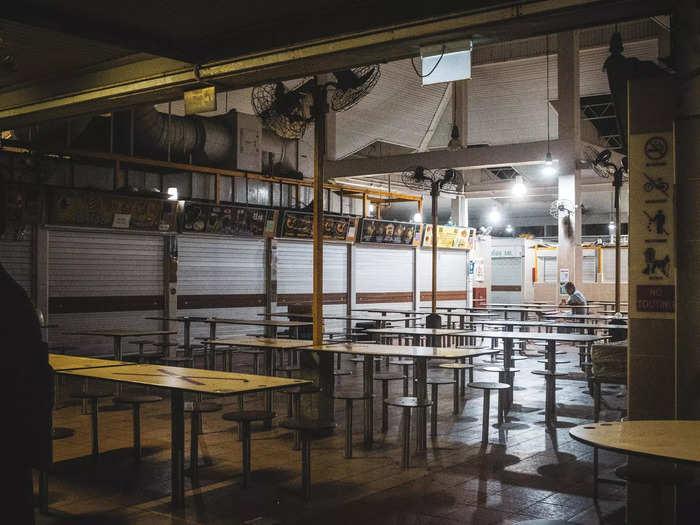
While Changi Village Hawker Center is usually bustling even past midnight, there was barely anyone around when I started my visit in the wee hours of a recent Saturday morning.
Remnants of people's dinners — from cans of beer to leftovers — were piled on tables. A handful of diners was enjoying a cigarette with a cup of coffee from the one or two beverage stalls that were open.
In one area of the hawker center, a few vendors dropped off supplies for the day.

While the majority of the stalls were closed, boxes of raw produce — from sugarcane to vegetables — were stacked on empty tables. I later learned that most stalls only begin preparations at 6 a.m., even during the weekends when there are more diners.
Mizzy Corner was one of the few stalls open. As their first customer usually arrives at 6.30 a.m., they begin preparations more than two hours in advance.
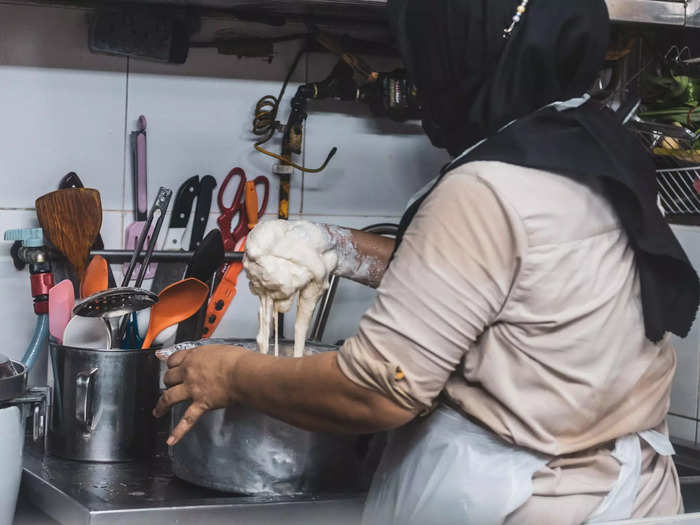
One of the stalls cooked meals primarily for delivery orders; the other made preparations for those dining at the hawker center.
I met one of Mizzy Corner's cooks, who was an hour into her shift and not in the best mood. Thinking I was a customer who had arrived too early, she shooed me away from the stall. Even so, I was able to observe how she prepared the stalls' famed nasi lemak, albeit from outside her kitchen.
When I visited the stall it was Ramadan, when Muslims all over the world fast from dawn until sunset for a month.
Mizrea told me her staff could choose to take leave from work during Ramadan.
"We don't judge whether our staff fast or they don't," she said. She added that she understands that having to fast while working can be "challenging."
Mizrea told me she employs around 10 staff, many of whom have worked at the stalls for more than five years.
One cook from each stall prepares dozen ingredients that collectively form a nasi lemak dish.
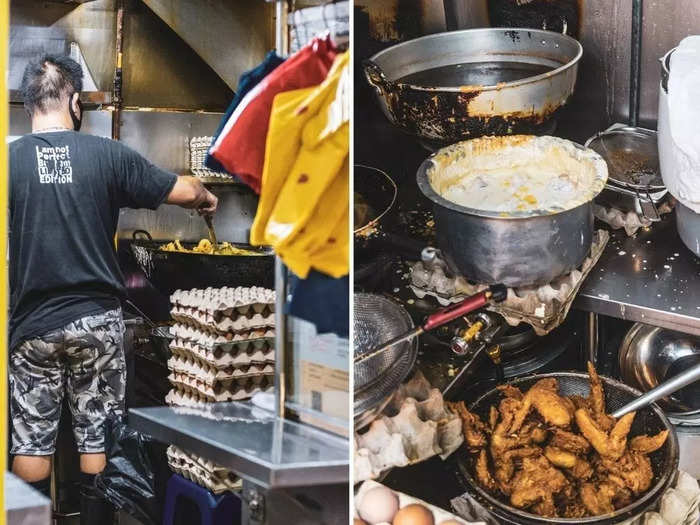
All the ingredients are sourced through a supplier. I spotted around 15 trays of eggs stacked beside a large wok.
Meat-based dishes like rendang — spiced beef braised in coconut milk — are usually prepared every three days.
The stall typically orders around 10 kilograms (22 pounds) of meat for rendang, Mizrea said. Other meat items like chicken and fish are prepared daily. Much of the cooking process involves marinating and deep-frying: The cooks started by frying dozens of eggs and sausages, before coating chicken wings with a thick batter.
The chefs prepare rice, the central ingredient of nasi lemak, in a home-style rice cooker rather than an industrial one.
Sambal, the spicy sauce served with nasi lemak, is cooked for eight hours.

Widely regarded as the most flavorful ingredient in nasi lemak, sambal — a sweet and spicy relish — is cooked on a low boil for several hours. Some of the ingredients in sambal include fresh chilies, garlic, sugar, and shrimp paste.
In 2017, a pot of boiling sambal ignited a fire at the stall which caused between S$20,000 and S$30,000 in damages, Mizrea told local news outlet TODAY at the time.
While nasi lemak is predominantly eaten with meat, there were a few vegetarian options.

While my favorite ingredients to pair with the dish's rice are fried chicken and rendang, vegetarian options like begedil — a type of fried potato cutlet — are also popular with nasi lemak.
I spotted the first customer of the day at 6.40 a.m. He said Mizzy Corner serves the best food in the hawker center.
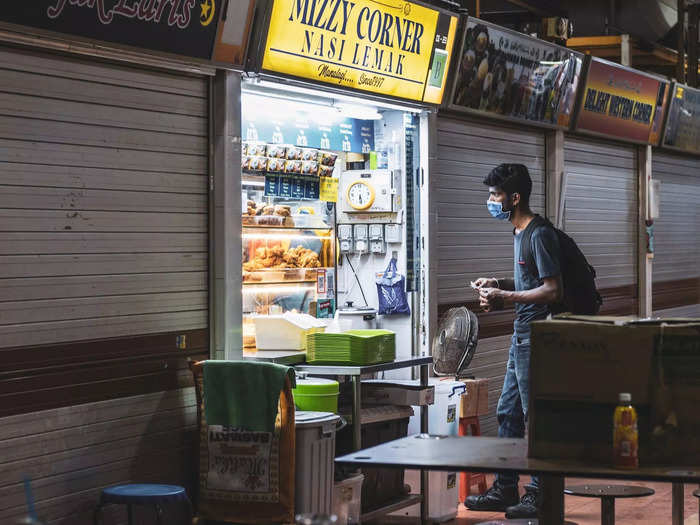
Saran, a man in his 20s, was the first to order the dish before the break of dawn on Sunday. He picked the most popular option — fried chicken nasi lemak.
"Out of the many stalls, I only like three of them," Saran told me. "But Mizzy has always been the best, and is worth the money."
More than a dozen people were lining up for nasi lemak by 8 a.m. Many diners were having the famed dish for breakfast.
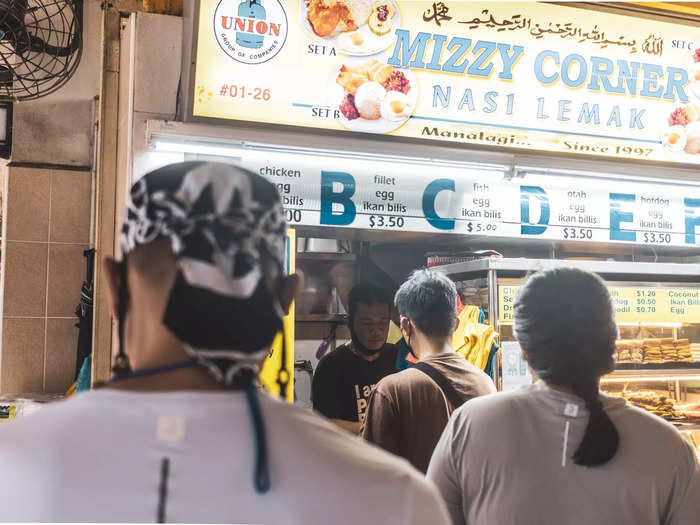
The hawker center was buzzing as dawn broke. Families, fishing enthusiasts, and cyclists filled up tables and formed long lines at several stalls.
Mizrea arrived just as a snaking queue began to form, helping staff serve food to hungry diners.
I was looking forward to trying the nasi lemak, so I joined a line of about 15 people. The line only grew longer as more people spilled into the hawker center.
I ended up spending almost 16 hours at the hawker center, returning later in the day to have nasi lemak for lunch and dinner. I found myself appreciating hawkers even more after witnessing the long hours of hard work that it takes to run a stall.

I was delighted with Mizzy Corner's rendition of the classic Malay dish and brought a few packets of it home.
As for the future of Mizzy Corner, Mizrea said she hopes to expand abroad.
"We want to bring people in other countries to taste our food," she said. "Maybe America's next," she added.
READ MORE ARTICLES ON
Popular Right Now
Popular Keywords
Advertisement